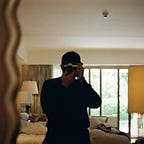Capturing Aesthetics: How to Create Stunning Photos with a Film Camera
In today’s digital age, where everyone has a high-quality camera in their pockets, the art of film photography has made a remarkable comeback. Film cameras offer a unique and nostalgic way to capture moments while producing aesthetically pleasing images that digital photography often struggles to replicate. In this article, we’ll explore how to make an aesthetic photo with a film camera, from selecting the right film to mastering the composition and post-processing techniques that will make your images stand out.
- Choose the Right Film
The first step to creating aesthetic photos with a film camera is selecting the right film stock. Different films produce distinct looks, colors, and textures, so understanding your film’s characteristics is crucial. Here are a few popular film options:
a. Color Negative Film: This type of film produces vibrant, true-to-life colors with a slightly soft, grainy quality. It’s perfect for capturing everyday scenes with a vintage touch.
b. Black and White Film: Black and white film is known for its timeless, dramatic effect. It’s excellent for capturing emotions, textures, and contrasting light and shadow.
c. Slide Film (Positive Film): Slide film creates vivid, high-contrast images with rich color saturation. It’s ideal for landscapes and scenes with intense colors.
d. Experimental and Special Effects Films: There are also specialty films like infrared, redscale, and expired films that can yield unique and artistic results.
Experiment with different film stocks to find the one that matches your creative vision for each specific photo.
- Master the Art of Composition
Composition is key to creating aesthetic photos with a film camera. Unlike digital photography, where you can take multiple shots and choose the best one, film photography encourages careful consideration of each frame. Here are some composition tips:
a. Rule of Thirds: Divide your frame into thirds both horizontally and vertically. Place your subject or point of interest along these lines or at their intersections to create balance and visual interest.
b. Leading Lines: Use natural lines or objects in the scene to draw the viewer’s eye towards the subject.
c. Framing: Incorporate elements like doorways, windows, or foliage to frame your subject and add depth to the image.
d. Negative Space: Don’t overcrowd your frame. Sometimes, minimalism can be incredibly aesthetic. Use negative space to emphasize your subject.
- Pay Attention to Lighting
Good lighting is essential for any type of photography, but it’s particularly critical when working with film. Film cameras have limited sensitivity to light (ISO), so choose the right lighting conditions for your chosen film stock.
a. Golden Hour: The soft, warm light during sunrise or sunset can add a magical quality to your photos.
b. Overcast Days: Diffused light on cloudy days can help reduce harsh shadows and create a moody atmosphere.
c. Indoor Lighting: Experiment with natural and artificial light sources to create unique effects and shadows.
- Experiment with Techniques
Film photography offers the opportunity to experiment with various techniques to add character to your photos:
a. Double Exposures: Combine two or more images on a single frame to create surreal and artistic effects.
b. Long Exposures: Capture motion and create dreamy, ethereal images by using a slow shutter speed.
c. Multiple Formats: Some film cameras allow you to switch between formats (e.g., 35mm and medium format) to achieve different results.
- Post-Processing and Scanning
Once you’ve developed your film, you can further enhance your photos through scanning and post-processing. Use software like Adobe Lightroom or Photoshop to adjust contrast, exposure, and color balance. However, remember to embrace film’s imperfections and avoid over-editing, as film photography is all about preserving the authentic and tactile qualities of analog imagery.
Conclusion
Creating aesthetic photos with a film camera is a rewarding journey that allows you to slow down, appreciate the art of photography, and experiment with various techniques and film stocks. With the right film choice, composition, lighting, and a touch of creativity, you can capture moments and emotions in a way that digital photography often cannot replicate. So, dust off that old film camera or invest in a new one, and embark on a journey of artistic expression through analog photography.
